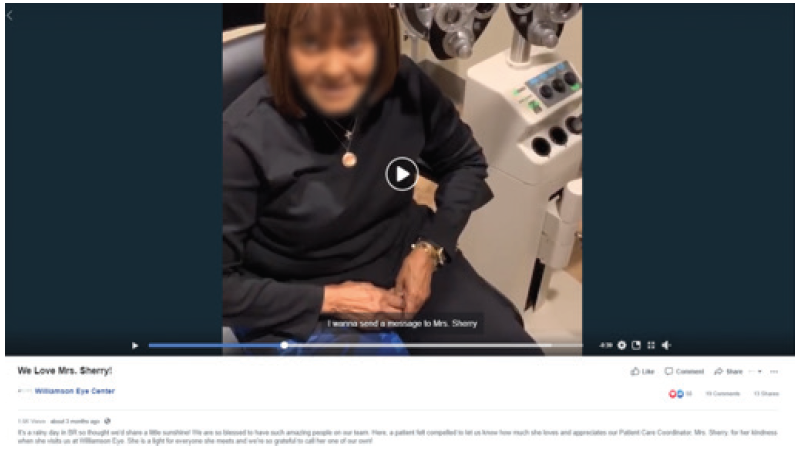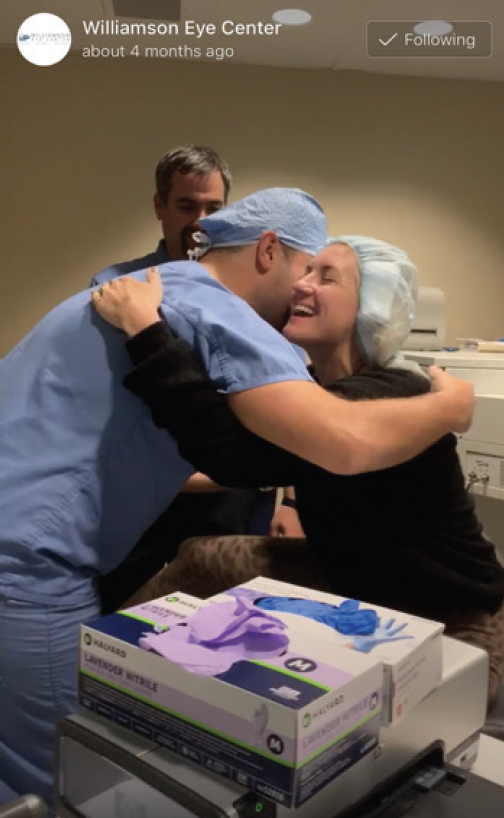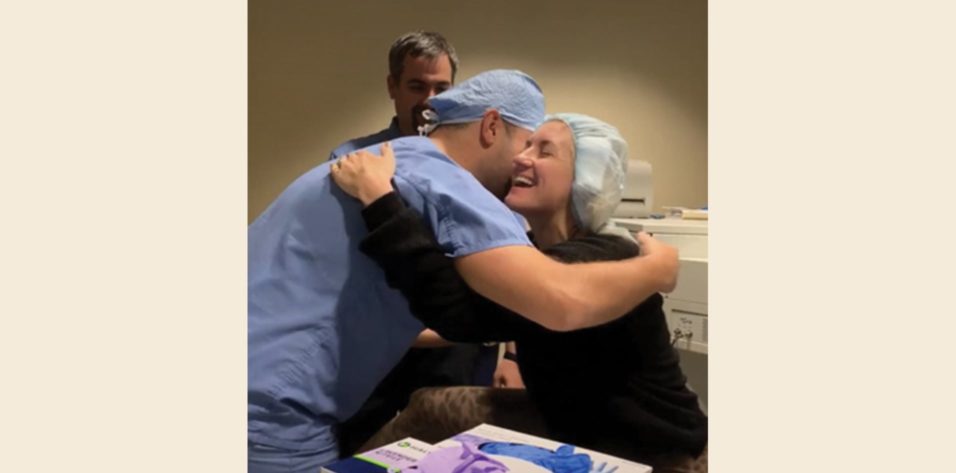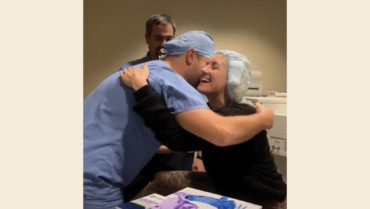
If you struggle to see the value of using social media for your practice, take a look at the data. As of 2019, a reported 90.4% of millennials, 77.5% of generation Xers, and 48.7% of baby boomers are active social media users.1 Those numbers sound a lot like your target surgery demographics, don’t they?
Many people spend a great deal of time on social media, sharing what they eat, wear, think, and do. A recent study found that people aged 55 to 64 years were more than twice as likely to engage with social media content as people 28 years and younger.2 If my 86-year-old grandmother has found a way to connect and engage on social media, you can too!
Blake K. Williamson, MD, MPH, MS, has instilled a love for great storytelling in the team at Williamson Eye Center in Louisiana that has helped to make our social media presence prosperous. Our constant determination to capture meaningful content has led to our successful social media process. In this article I outline some of the rules we follow.
Document, Document, Document
Never miss an opportunity to capture a story. If a patient is telling you how wonderful the call center was when scheduling his or her appointment, document it. If your team is creating a special moment for a patient by singing to her on her birthday, record it (Figure 1). Having a staff social activity? Tell the world about it.

Figure 1. Williamson Eye Center recently shared a video of Dr. Williamson and his staff singing to a patient.
Dr. Williamson always says, “Document, document, document.” The content doesn’t have to be perfect. In fact, for us, people tend to engage more with raw content that does not look overproduced. What is important is making yourself and your team aware at all times to be listening for and ready to capture meaningful stories.
It Takes a Village
Williamson Eye Center has four locations, 13 physicians, and more than 120 employees. Great content is everywhere, but capturing that content over such a large practice footprint is not a one-man show. Encourage your entire team to document stories when opportunities present. Your marketing director and designated social media coordinator cannot be everywhere at all times, but they can help your team by showing how to capture a story. Set everyone up for success by having media consent forms printed and readily available around the office so they don’t have to go looking for them when opportunity arises.
Doctors: What You Say is Gold
In most cases, your patients are so grateful for what you do for them that they will do just about anything you ask. For happy patients, the cataract or refractive surgery postoperative visit is often a great opportunity to capture content. At our practice, the conversation goes something like this:
Doctor: “I’m so happy that you are pleased with your surgery results. Would you mind doing me a huge favor?”
Patient: “Sure!”
Doctor: “Would it be okay if I have someone from my team come in and talk with you about your experience and record it so that we can share your story?”
Patient: “You gave me back my vision, so I’m more than happy to tell everyone about it. Let’s do it!”
We have found that patients are likely to share their stories on camera or do online reviews if you simply ask them.
Social Media Case Study: Waring Vision Institute
Create a consistent brand message.
By George O. Waring IV, MD, and Stacey McLoughlin


Social media platforms serve many purposes. For the medical practice, use of social media has become a widely adopted marketing strategy, particularly in elective medicine. At the Waring Vision Institute in South Carolina, we use social media to enhance our branding and celebrate vision correction by highlighting clients’ experiences and announcing current events.
Branding with social media requires discipline and consistency. Each social media platform has unique functionality. For example, Facebook is best suited for linking to content or videos, and Instagram is best for sharing photos and videos but not embedded links.
Most people are familiar with the common functionalities of these platforms, such as tagging images and using emojis to add a personal touch and bring posts to life. At Waring Vision Institute, we have developed our social media branding strategy around imagery with a more minimalist approach. We consider the subtleties of graphic and video design, including font and border selection and the use of high-quality images.
We do not regularly incorporate the use of emojis and tagging in the elements of our posts, and by doing so we maintain a unifying style for all content.
Social media engagement is a wonderful way to connect your practice to the public. If your practice needs extra help, many web design companies offer social media campaign management as a service. Whether social media strategy is managed in-house or is outsourced, maintaining consistency in your content style and design elements is a wonderful opportunity to strengthen your brand.
Get Power From the People, For the People
The primary goal of social media is not only to stay relevant but, ultimately, to reach new followers and thereby grow your practice. There’s much more value if you can get a patient to post on his or her own feed (Figure 2). That way, his or her followers who are not following your practice will see it directly. Facebook prioritizes showing posts from real people over business pages. This is an easy way to work with that pesky, ever-changing algorithm.

Figure 2. Patients are encouraged to record their appreciation for the surgeons and the staff after their surgery.
We believe that the best way to encourage patients to share content is with a heartfelt request by the surgeon. Dr. Williamson tells patients that he reads their posts and that they mean a lot to him. He even comments on posts himself, and patients love that personal touch. Other people see that interaction, too, and this goes a long way in building our brand.
Seize the Moment
One question we often hear is, “How do you get your patients to talk on video?” The answer is to find the right time to ask and be ready for it. LASIK surgery day is a huge content day for us. We have someone from the marketing team available on these days because there is no better time to capture hours of content. This takes extra finesse, however, because the surgery flow moves quickly and cannot be interrupted.
Teamwork Makes the Dream Work
Arguably nobody builds better relationships with your patients than your refractive surgery counselors. We always take a moment to review the list of surgery patients for the day with our team to learn about the great stories that they’ve heard. This way, we can plan to spend a little extra time with patients we know will provide a slam-dunk story.
We’ve made our media consent form part of the surgery paperwork that patients sign upon arrival on surgery day. A staff member will say, “Dr. Williamson loves to share patient stories and the excitement of LASIK on social media so that others can see how rewarding it is. Would you be comfortable being on video or having your photo taken?” If the answer is no, the staff member simply responds, “Thank you. We will let him know.” If it’s a yes, the form is signed and scanned into the patient’s chart. By doing this, we eliminate the need to make an awkward request for consent so we can focus on capturing the moment, and we know not to bother patients who prefer not to be on camera.
Situational Awareness is Key
On LASIK surgery day, patients can be emotional. Some are excited, and some are nervous. Knowing when to ask for a photo or video versus when to give someone space is greatly important. We work hard to create a no-pressure environment and make the process enjoyable for everyone.
We find it most helpful to start a casual conversation with patients while they are relaxing and waiting. “Are you excited or nervous? What made you finally decide to have a LASIK procedure?” This typically leads into a great story. Let them talk first and make a connection with them. Then say, “That was an amazing story, would you mind telling me again on video so we can share it with others?” We usually find that patients are more comfortable at this point and ready to share.
The wow moment
We all know that the most exciting moment in LASIK is when the patient sits up and can read the clock across the room. Some patients cry and some laugh, but they’re always happy. For those who have signed the consent form, have the camera ready for this moment (Figure 3). A series of short video clips on your Instagram or Facebook pages of happy patients immediately after surgery can be powerful.

Figure 3. Be sure to capture the wow moment immediately after a life-changing procedure.
Capture, Plan, Post
On LASIK surgery day, we typically spend the entire surgery time documenting. At the end of the day, our marketing team looks at all of the content we’ve captured and develops the day’s posts as a cohesive story on Instagram and Facebook. If there’s a great opportunity to live-stream, we are not afraid to turn on the cameras. We have had many new patients tell us they came to us because they watched a live surgery stream and saw how easy the procedure was for someone else.
If you’re strategic with content, you can build a content bank so that you can post items you haven’t yet used on slow days when you have less to share.
FOOLPROOF HYBRID APPROACH
Keeping relevant, regularly updated content on your page is crucial for two reasons. First, people are now searching for your brand directly on social media, and, second, this content will also show up in search engines. Having an editorial calendar with a schedule for educational posts is a good idea, so you never have to stress about finding something to post.
It is important to note that organic reach is basically a thing of the past. If you aren’t paying to reach a broader audience on social media, you’re only reaching a small amount of your potential followers. If one of your posts is getting good engagement from your followers, you should boost it through paid advertising. If you have stellar content, put money behind it as part of your strategic, targeted campaign.
At the end of the day, you win the social media game by not being afraid to take risks and by seizing every opportunity to document your patients’ stories.
1. 50 social media statistics every marketer should know in 2019. ShareThis. May 10, 2019. https://sharethis.com/best-practices/2019/05/social-media-statistics-for-marketers-2019/. Accessed July 25, 2019.


